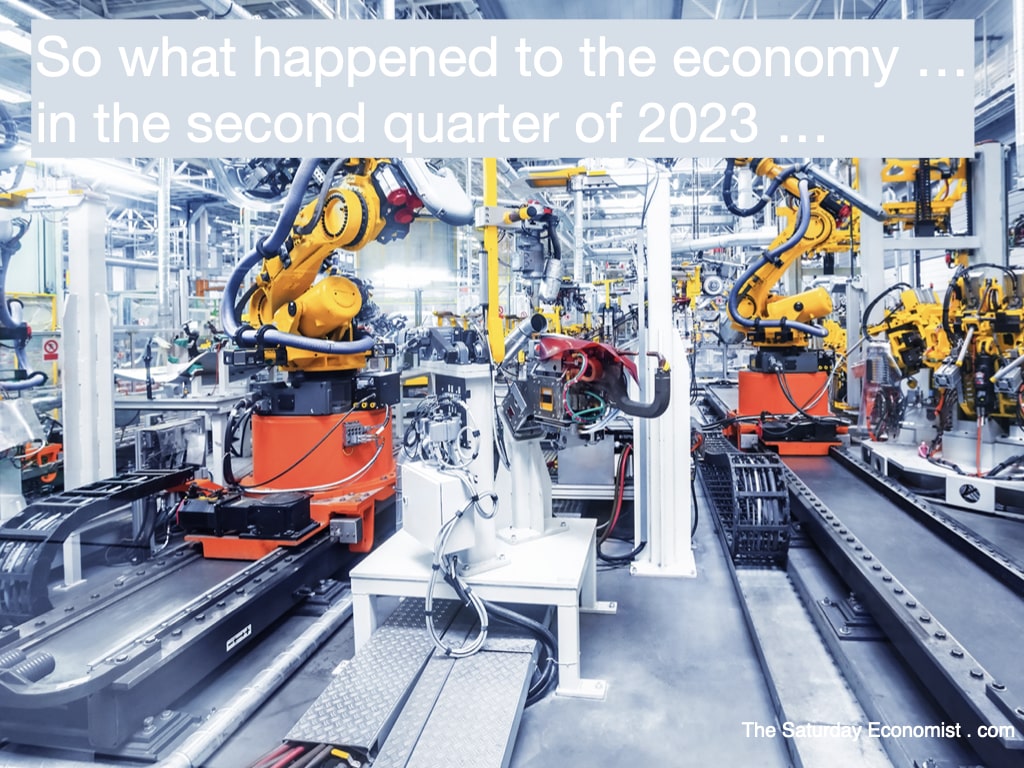|
Growth ...
The economy appears to have expanded by 0.4% year on year in the second quarter, with growth in construction (2.6%), manufacturing (0.8%) and services (0.4%). This suggests a positive performance overall, slightly lower than the first quarter growth of 0.5%. Car registrations increased by 20% in the first seven months of the year, providing a boost to output. The earlier setbacks in manufacturing, reflect a return to trend rate rather than a setback to output. In the first half of the year, growth was just over 0.4%. Unexciting maybe, but still suggests much of the gloom and doom is overdone. So what of the year as a whole? In our presentations, we forecast growth of 0.4% this year. At present there appears to be no reason to adjust the forecast. The latest NIESR forecasts in the August update, now also project growth of 0.4%. According to NIESR, growth in 2024 is expected to be 0.3%, not really sure why. We model in growth of 1.0% in 2024 and 1.5% in 2025. We expose our optimism bias perhaps. Inflation In the second quarter of the year, inflation CPI basis averaged 8.4%. Producer output prices averaged 2.6%. Producer input prices averaged 1.7%. Manufacturing cost trends have fallen rapidly. We expect CPI inflation to average 6.0% in Q3 and 5.0% in the final quarter. Energy prices have fallen. Gas prices have collapsed. The continuing war in Ukraine and uncertainty in the Black sea maintain an overhang on price trends. Oil prices Brent Crude averaged $78 in the second quarter compared to $114 dollars in the same period in 2022. Oil marked at $86.81 this morning. The impact of Saudi cuts to output are assessed. We model average prices at $84 dollars in the final quarter. The overall rate of inflation (CPI basis) is expected to fall to around 5% by the end of the year. The 2% target for headline inflation may remain elusive into 2025. Employment and Earnings Unemployment was 1.37 million in the second quarter. The unemployment rate was 3.8%. The number of vacancies averaged 1.0 million, the challenge of recruitment persists. We expect unemployment to drift slightly higher to 1.45 million by the end of the year. The u-rate rising to 4.1%. Earnings in the second quarter averaged over 6.5%. We expect this to peak in the quarter, drifting slightly lower to around 5.2% by the end of Q4. The underlying rate of wage inflation will underpin the forward outlook for prices despite the hopes of the Bank of England. Total employment in the first quarter increased to just over 33 million. The number of people self employed was steady at 4.4 million. Interest Rates We maintain our base rate peak this year at 5.5% on the basis of a further 25 basis point hike in September. We model 4.50% as the long run rate for base rates and ten year gilts in life after Planet ZIRP and yes you can have economic growth with 4.5% rates. The gilt curve softening reflects our mid term projections. Short rates up to one year remain too high. Long term rates are falling into place. Mortgage rates are easing back reflecting the more moderate outlook for base rates. We still expect US ten year bond yields to average over 4.00% in the final quarter of 2023. U.K. rates will also average over 4.00%. Ten year gilt yields marked at 4.52% this morning. In the UK, prior to the Great Financial Crash [2000 - 2008] the average inflation rate was 2.0%, the average UK base rate was 4.50%. Ten year bond yields averaged 4.50%. The average growth rate was 2.5%. The hard yards now gained in life after Planet ZIRP. There will be no return to the forbidden planet. Under pricing capital never a great idea.
0 Comments
Leave a Reply. |
The Saturday EconomistAuthorJohn Ashcroft publishes the Saturday Economist. Join the mailing list for updates on the UK and World Economy. Archives
July 2024
Categories
All
|
| The Saturday Economist |
The material is based upon information which we consider to be reliable but we do not represent that it is accurate or complete and it should not be relied upon as such. We accept no liability for errors, or omissions of opinion or fact. In particular, no reliance should be placed on the comments on trends in financial markets. The presentation should not be construed as the giving of investment advice.
|
The Saturday Economist, weekly updates on the UK economy.
Sign Up Now! Stay Up To Date! | Privacy Policy | Terms and Conditions | |

 RSS Feed
RSS Feed